Jul 13 2019
Back on the sliding seat again
On Sunday, June 30th, Kazi and I rowed a fun fartlek style workout in the double.

Then, on Monday, we drove off to Romana’s family cottage in the Giant Mountains, Czech Republic, where we were joined by my sister, her two sons, and a close friend.
And that was the start of a near two week intermezzo of unstructured cross training, which consisted mainly of hiking, but also involved sawing, hauling logs, building camp fires, and other pleasant mountain activities.
We did a five day trek through the mountains, doing an average of 6 hours of hiking a day.
 Some nice mountain huts. Some unexpected encounters:
Some nice mountain huts. Some unexpected encounters:
And of course we had to cherry-pick:
Thursday was travel day and on Friday, I had my first outing in the single after this good break.

The weather was funny. It was clouded and there were intense rain showers, which lasted about 10 to 20 seconds. I got totally wet, but it wasn’t unpleasant, because the air temperature was still around 22 degrees.
The workout was just paddling and a few pieces to establish a baseline, going into the last 8 weeks of preparing for the World Rowing Masters Regatta. After a few warming up sequences and practice starts, I did the following pieces:
- Trying to hold 330W for as long as possible. I basically broke down at the first bite of lactate pain.
- A four minute piece, evenly paced, maximum Watts
- A full out one minute piece
The first piece is slightly above what I think I can hold for a 1k race.
This was rowed into a slight head / cross wind.
Workout Details
#-|SDist|-Split-|-SPace-|-Pwr-|SPM-|AvgHR|MaxHR|DPS-
00|00588|02:16.2|01:55.7|335.7|31.7|000.0|0.0|08.2
I originally wanted to continue pushing until the average power (on the NK SpeedCoach) showed 5W below the target, but somehow, after the vacation, I wasn’t prepared for the lactate rush and I just stopped rowing. Well, 588 meters. It’s a baseline, and I think pushing this out to something closer to 1000 meters is realistic.
I did a 3000 meter paddle to recover, then started a 4 minute piece. The goal of this one was to row it flat pace (power) but max out over four minutes. I was careful this time and chose 300W as the target.
Workout Details
#-|SDist|-Split-|-SPace-|-Pwr-|SPM-|AvgHR|MaxHR|DPS-
01|00981|03:50.6|01:57.6|298.9|29.5|000.0|0.0|08.6
Again, this was done from a race start.
I was surprised by how low I could rate but decided not to bother about stroke rate. It turns out I was at 600 J Work per Stroke, which is above what I am aiming for. Need to work on lightening up.
The third piece was a full out minute, from a standing start, which I did after a 2.5k paddle.
Workout Details
#-|SDist|-Split-|-SPace-|-Pwr-|SPM-|AvgHR|MaxHR|DPS-
00|00254|00:57.0|01:52.4|395.7|35.7|000.0|0.0|07.5
I have no heart rate data, because I forgot to pack my heart rate band. So why am I doing all this? Because, using the Critical Power plot functionality of rowsandall.com, I can use those three pieces to get a feeling for where I stand in terms of 1k fitness:
The chart takes data from yesterday’s pieces, plus a few longer pieces that I did in the fall and this spring. It doesn’t contain sprint data from the 2018 season.
Here’s a close-up:
 This section of the CP curve starts at one minute and ends at five minutes. I expect the sprint races to take between 3:40 minutes and 4 minutes, depending on the weather conditions. The green curve is a conservative estimate and gives guidance for training pieces, while the red curve indicates where I should be for a regatta .
This section of the CP curve starts at one minute and ends at five minutes. I expect the sprint races to take between 3:40 minutes and 4 minutes, depending on the weather conditions. The green curve is a conservative estimate and gives guidance for training pieces, while the red curve indicates where I should be for a regatta .
So the goal for the coming 8 weeks is clear.
Shift the red curve to the right and up.
The beauty of using the CP chart is that you can use different pieces, and you’re independent of the wind strength. I could do a full out 1k test, or I could repeat the pieces I did yesterday (what I intend to do) or I could use data from interval sessions.


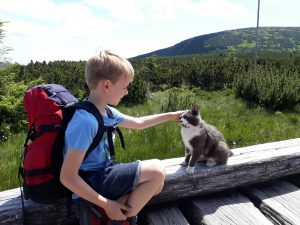
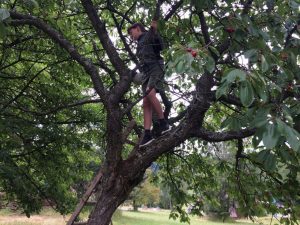


























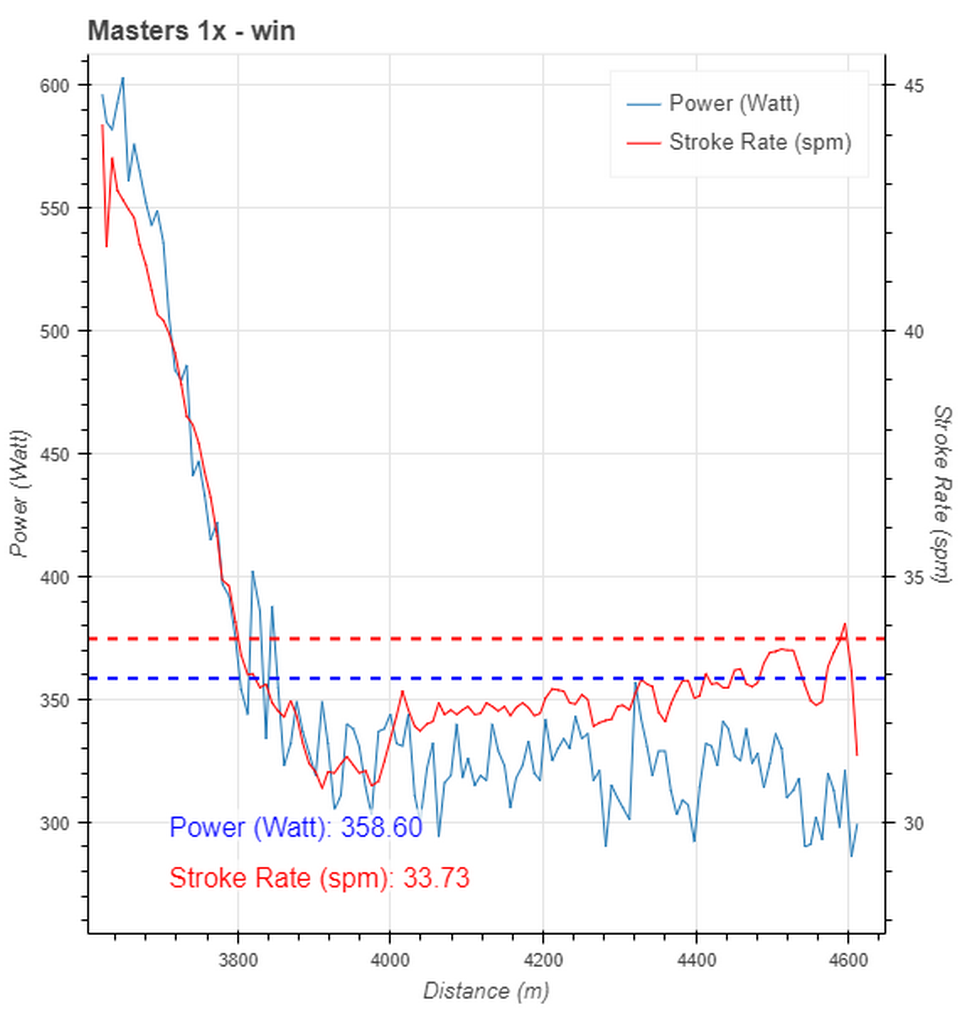
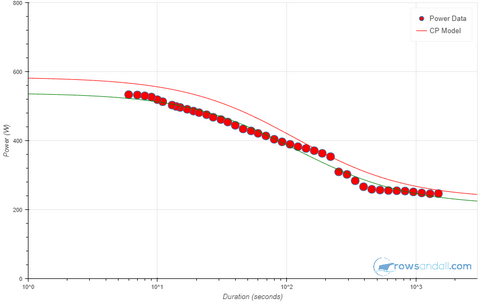


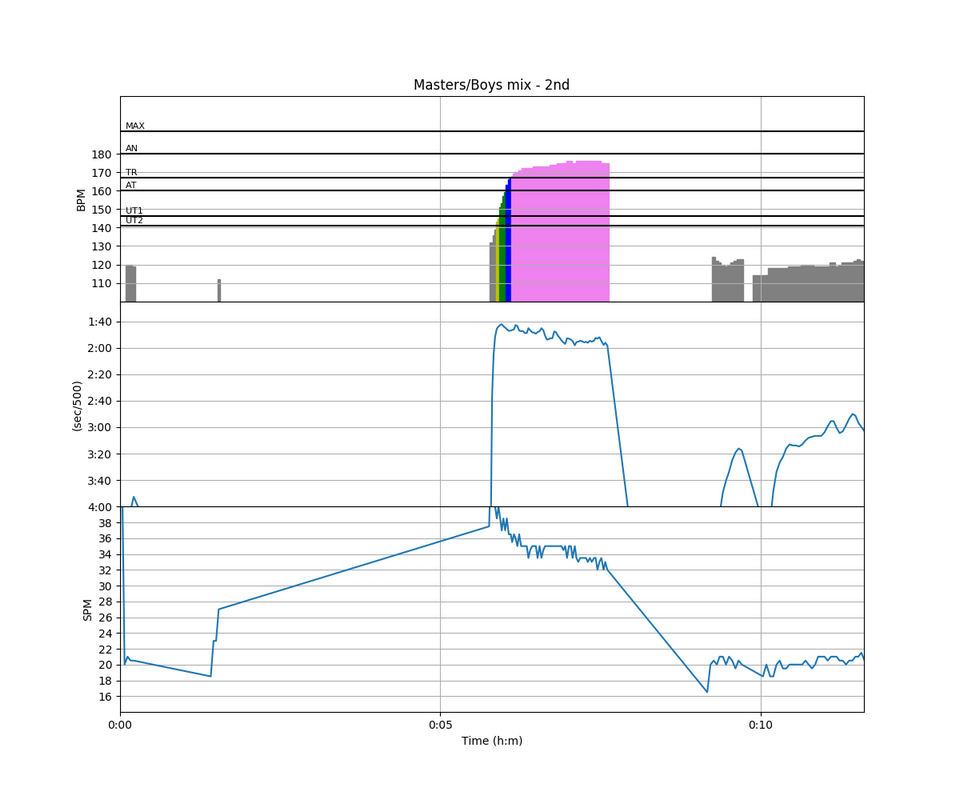
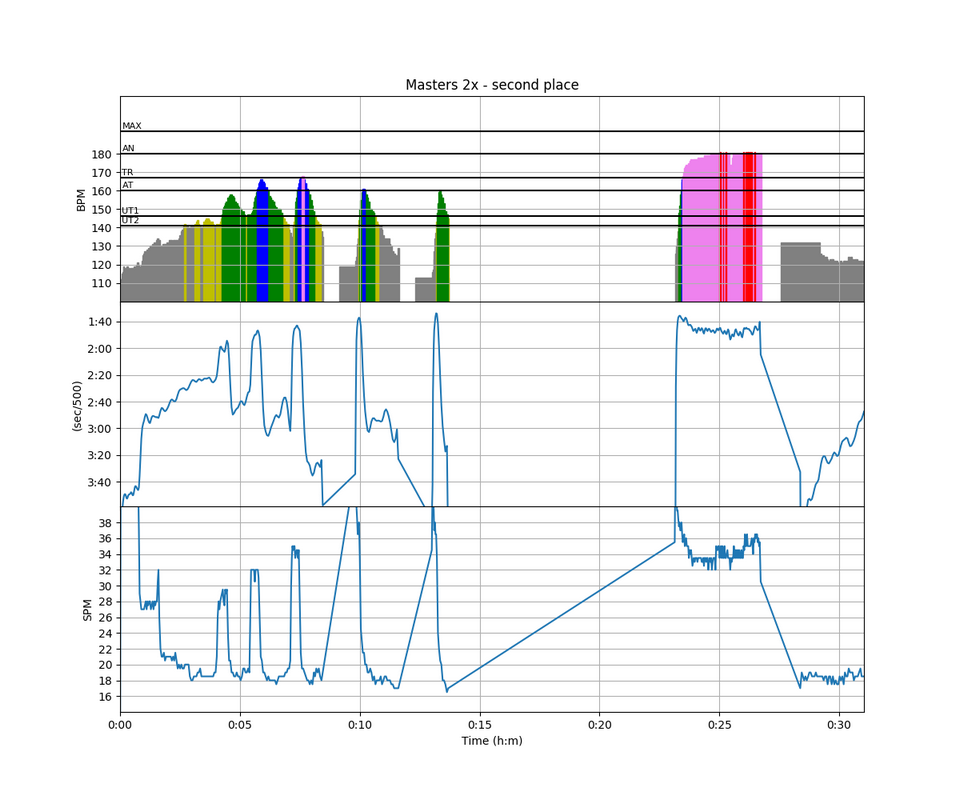



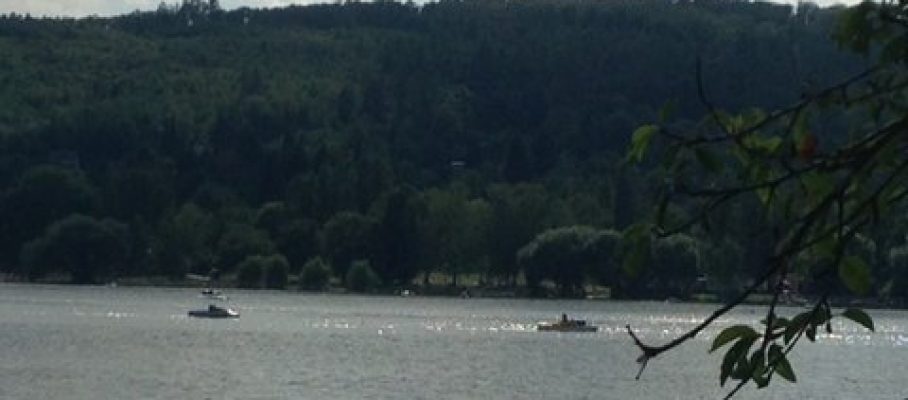



Aug 1 2019
The EURow Regatta in Linz, Austria
Friday
On Friday, July 26, we drove our trailer to Ottensheim near Linz. That’s a very easy 3.5 to 4 hour drive, down to Vienna and then basically following the Danube upstream, passing beautiful Melk and other nice places.
Romana and I parked the trailer on the race venue, claimed rack space by putting our boats on it, and then drove back to Linz to find our accomodation.
We had a small 1 room apartment about 2km east of the center of the town. It was past 7pm when we wanted to get something to eat, so I pulled out my phone and looked for the nearest place on Foursquare. This turned out to be some place with good reviews, about 700m of walking in the southeast direction.
That turned out to be walking 1500m, because of some construction sites blocking the shortest route. And when we arrived there, in the middle of an industrial area, the place was closed for the summer.
So I thought we should take a taxi to the city center and eat there. Well, there’s no Uber in Linz, and before I had figured out the phone numbers of a classical taxi service, we had a better idea. There was a big hotel close to our apartment, on the bank of the Danube. Why not have a dinner in the hotel restaurant? That worked out, but we ate later than planned, and we got a 3km hike as our exercise of the day.
Later, we found a piece of paper in our apartment, listing places to eat including opening times.
Saturday
Romana dropped me off at the regatta course in the morning, and then drove to lake Lipno on the Czech side of the border to pick up our son Robin, who had spent a week at a sailing summer camp.
I took care of my single. Then I had a coffee with Dave and Daniela who represent Wintech, Concept2 and Nielsen-Kellerman in the Czech Republic, to tie out some details about the September camp.
Then it was time to get ready to race.
The EURow regatta (I don’t like the name, by the way) is a revamped Austrian Masters Nationals. It’s open for crews from other nations, and they are marketing it as a EU wide regatta, sort of like Euromasters in Munich. As it is a new or re-branded event, and it is held on the same course as the World Rowing Masters Regatta (WRMR) in 2020, Romana and I (and a few other Czech Masters) thought it was a good idea to check out this regatta. My other motivation was that I have done very little racing in the single, in this season, and I know I need some race experience as a preparation for this year’s WRMR. The good masters rowers in Austria are fast enough to be a good trial. One always performs differently in racing conditions than in a training.
The format of the regatta was heats on Saturday (but the heat winner did get a medal) and finals on Sunday (with medals for the first three). As the Masters C 1x had only 6 participants, Saturday was a race for which lane you race in on Sunday.
So how did the race go? It was ideal weather, almost no wind, flat water, fixed start pontoons and I didn’t know 4 of my 5 opponents. So it was an ideal practice race. The only opponent I knew was Mr Helbig. Mr and Mrs Helbig are usually a few seconds faster than Romana and I in the mixed 2x, but I never raced him directly in the single. Also, I didn’t check his online results, but somehow was expecting him to be roughly as fast as I.
I had a great start. Some people were ahead of me and some were behind, including Mr Helbig. Based on my Critical Power curve of last season and recent trainings, I was aiming for around 315 to 325 Watts. When I took a first glance at the SpeedCoach, about 200m into the race, I was going at 350W. I decided to let that gradually drift down while keeping the stroke rate at 32, then wind up in the second half.
I succeeded beyond my expectations. I was able to hold the power around the 340W range.
Nobody passed me and I didn’t pass anyone else, although I tried hard to catch up with the guy rowing ahead of me. I finished third. As you can see from the picture, I was happy with the result.
Look, I had the most consistent splits from the first to second 500m of all competitors!
The picture also gives a really good impression of the nice flat water. According to the official results I finished third (no surprise) in a time of 3:48.
With that race a success, we spent the afternoon exploring the old town of Linz.
In the evening, I uploaded the race’s data to the rowsandall.com site. As expected, this did shift my Critical Power curve by about 25W around the four minute benchmark. Yay! I guess I have to move my target for the upcoming regattas.
We had dinner in the hotel restaurant again. This time, we walked straight to it, instead of doing a 3km hike.
Sunday
So Sunday would be a repetition of Saturday’s program, but two hours earlier (and divided in “big” and “small” finals for those disciplines that had more than 7 competitors). And then, at the end of the afternoon, there would be mixed racing. Exciting!
My first race was at noon, so in the morning we took care of the double, had a coffee, watched some races, talked to friends. Had a really good time.
Then it was time to prepare for my race in the single. The weather was virtually the same as on Saturday, and I was up against the same opponents. However, I considered Saturday’s race a close result (except for the winner, perhaps), so everything was open again.
This time I was racing in lane 2. The first 200m seemed to be a repetition of Saturday (more about that later), with Mr Humbek leading, followed by Mr Hettler, and me rowing in third place. The difference was that my new target was 350W. When we were approaching the 500m mark, I thought I should try and pass Mr Hettler. I tried for 10 strokes, but was unable to get the power up, and I didn’t really close the gap.
As a consequence, I entered the third 250m interval with everything falling apart at the same time. The lactate burn peaked. The guy rowing behind me charged and was threatening to row through me. It was all very unpleasant, and all I could think of was somehow make it to the 750m without losing the bronze medal position. I did succeed in that, and then it was just a question of counting strokes until the finish line. Almost the same result as Saturday:
Here are the charts:
Here’s pace. See the dramatic slowdown in the third 250m:
And here’s stroke rate:
I also studied the other metrics (stroke length, slip, wash, work per stroke) but they were nearly identical between Saturday and Sunday. Well, in WpS you can see the dip as well:
And a picture of Romana and me between my 1x race and our mix 2x race, watching other races:
And now it was time to prepare for the mixed double. Always a huge event. Romana and I hadn’t raced since Euromasters in July 2018. We also knew that Ostrava was keen on beating us, and we know that the Helbig family has historically rowed 2 to 5 seconds faster than we. We didn’t know any of the other crews.
We had a good start and by 500m we were in second position, but not by much. The Helbigs and Ostrava were a second behind us.
We kept pulling strong and we were rowing really well. Passing the 500m mark, I was expecting the other crews to fall behind, but that didn’t happen. It was one of those mixed double finals again. With 250m to go I upped the stroke rate to 38 (and higher), but Michael Helbig started his engine and the Helbigs pushed for an amazing sprint. In the heat of the race, we were also passed by Ostrava. Fourth place.
Then it was time to make a group photo with all the Czech participants:
We loaded the trailer and drove home. The last 50km was driving through a very heavy thunderstorm (at an average speed of 60 km per hour) and we were home by 10pm.
Oh, and just for fun, a map of my 1x race from rowsandall.com. It’s fun to add the water navigation overlay when we were so close to a big river.
By sanderroosendaal • Uncategorized • 0 • Tags: 1x, 2x, mix, OTW, race, racing, rowing, sprint